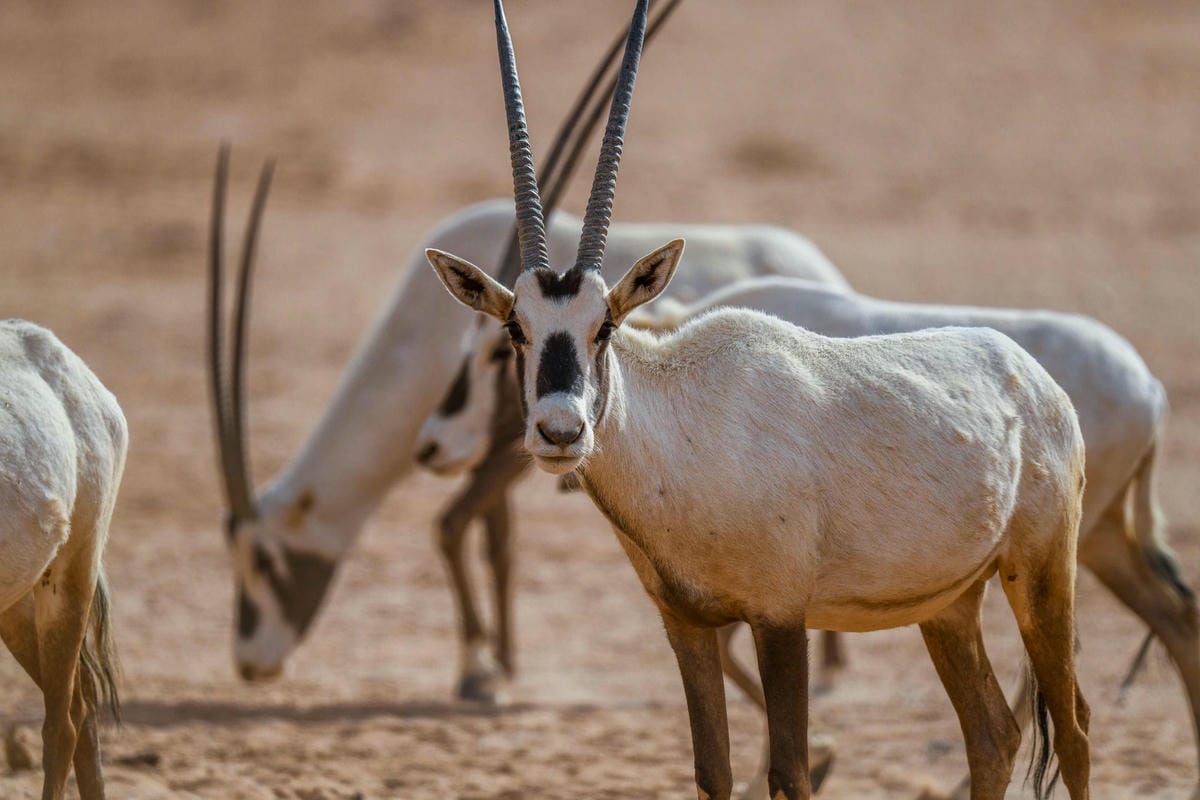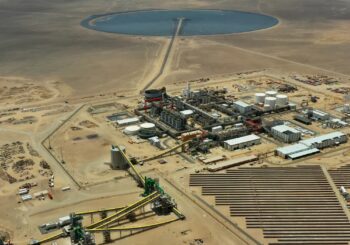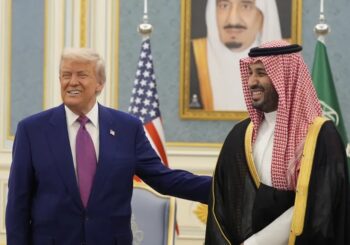As part of its growing environmental conservation efforts, Saudi Arabia has released 32 endangered animals into the wild within the King Khalid Royal Reserve, aiming to restore native ecosystems and strengthen biodiversity.
This initiative, led by the National Center for Wildlife (NCW) in partnership with the Imam Abdulaziz Bin Mohammed Royal Reserve Development Authority, is part of a broader strategy to reintroduce locally threatened species and encourage sustainable ecological models.
In a statement on LinkedIn, NCW said that the animals released this week include 20 Arabian sand gazelles, five Arabian oryx, four wild hares, three steppe eagles, and a black kite. These species are integral to the Kingdom’s natural heritage and have seen declining populations in recent decades due to habitat loss, overhunting, and climate challenges.
Protecting Endangered Species in Their Natural Habitats
The King Khalid Royal Reserve, located near Riyadh, serves as a protected area for restoring the natural balance of Saudi Arabia’s arid and semi-arid landscapes. The reserve, which spans over 700 square kilometers, provides a vital sanctuary for native wildlife. It is one of several key reserves under Saudi Arabia’s Vision 2030 environmental goals, which aim to expand green spaces, rewild protected zones, and promote sustainable tourism.
This rewilding initiative is not the first of its kind. Saudi Arabia has been steadily increasing its commitment to conservation, particularly through wildlife breeding centers and rehabilitation programs. The Arabian oryx, once declared extinct in the wild, has seen a revival through such efforts, with controlled breeding and release programs allowing populations to stabilize in select reserves.
The release is designed to do more than restore animal populations. It also supports ecological balance, which in turn benefits vegetation and broader ecosystem health. Predators such as eagles and scavengers like the black kite play important roles in controlling populations and cleaning the environment, while grazing species such as gazelles help manage plant growth naturally.
Reintroducing animals into protected areas is also part of Saudi Arabia’s push to develop eco-tourism as a new sector. By drawing attention to the country’s rich and diverse wildlife, the Kingdom hopes to create meaningful visitor experiences that raise awareness and generate support for environmental conservation.
National and Global Environmental Goals
Saudi Arabia’s environmental efforts fall within the framework of both Vision 2030 and international commitments to biodiversity protection. The Vision emphasizes a transition to a more sustainable future, with increased investments in renewable energy, protected lands, and nature reserves. The Kingdom has pledged to protect 30 percent of its land and sea territories by 2030 under the Saudi Green Initiative, a target that aligns with global biodiversity frameworks such as the UN Convention on Biological Diversity.
The National Center for Wildlife has been at the forefront of these changes, managing breeding centers and overseeing the reintroduction of wildlife into protected areas. These programs are supported by ongoing habitat restoration, anti-poaching measures, and public awareness campaigns.
Saudi Arabia’s natural landscapes may be harsh, but with continued care, they are proving capable of supporting thriving ecosystems once more. Initiatives like this one serve as a reminder that even in desert environments, balance can be rebuilt; one steppe eagle, oryx, or gazelle at a time.








Comments (0)